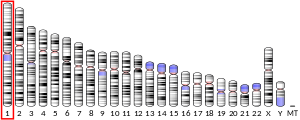
FNDC5

4LSD252995384061ENSG00000160097ENSMUSG00000001334Q8NAU1Q8K4Z2NM_153756NM_001171940NM_001171941NM_027402NP_001165411NP_001165412NP_715637NP_081678Fibronectin type III domain-containing protein 5, the precursor of irisin, is a protein that is encoded by the FNDC5 gene. Irisin is a cleaved version of FNDC5, named after the Greek messenger goddess Iris. Fibronectin type III domain-containing protein 5, the precursor of irisin, is a protein that is encoded by the FNDC5 gene. Irisin is a cleaved version of FNDC5, named after the Greek messenger goddess Iris. Fibronectin domain-containing protein 5 is a membrane protein comprising a short cytoplasmic domain, a transmembrane segment, and an ectodomain consisting of a ~100 kDa fibronectin type III (FNIII) domain. FNDC5 was discovered during a genome search for fibronectin type III domains and independently in a search for peroxisomal proteins. The ectodomain was proposed to be cleaved to give a soluble peptide hormone named irisin. Separately it was proposed that irisin is secreted from muscle in response to exercise, and may mediate some beneficial effects of exercise in humans and the potential for generating weight loss and blocking diabetes has been suggested. Others questioned these findings. The FNDC5 gene encodes a prohormone, a single-pass type I membrane protein (human, 212 amino acids; mouse and rat, 209 amino acids) that is upregulated by muscular exercise and undergoes post-translational processing to generate irisin. The sequence of the protein includes a signal peptide, a single fibronectin type III domain, and a C-terminal hydrophobic domain that is anchored in the cell membrane. The production of irisin is similar to the shedding and release of other hormones and hormone-like polypeptides, such as epidermal growth factor and TGF alpha, from transmembrane precursors. After the N-terminal signal peptide is removed, the peptide is proteolytically cleaved from the C-terminal moiety, glycosylated and released as a hormone of 112 amino acids (in human, amino acids 32-143 of the full-length protein; in mouse and rat, amino acids 29-140) that comprises most of the FNIII repeat region. The sequence of irisin, the cleaved and secreted portion of FNDC5, is highly conserved in mammals; the human and murine sequences are identical. However, the start codon of human FNDC5 is mutated to ATA, which causes it to be expressed at only 1% the level of other animals with the normal ATG start. A mass spectrometry study reported irisin levels ~3 ng/ml in human plasma, a level on par with other key human hormones, such as insulin.. There is no comparable study of irisin levels in other animals, where the ATG vs ATA start codon would predict a 100x higher concentration. A difference in the nucleotide sequence of human FNDC5 from that of mouse Fndc5 creates a different initiation codon, potentially generating a protein that begins at methionine-76 (Met-76). A protein initiated at Met-76 would be missing the signal peptide and would be trapped in the cytoplasm. Via mass spectrometry, irisin has been found to circulate in humans in levels similar to other key hormones, such as insulin.. Exercise causes increased expression in muscle of peroxisome proliferator-activated receptor gamma coactivator 1 alpha (PGC-1alpha), which is involved in adaptation to exercise. In mice, this causes production of the FNDC5 protein which is cleaved to give a new product irisin. Due to its production through a mechanism initiated by muscular contraction, irisin has been classified as a myokine.
